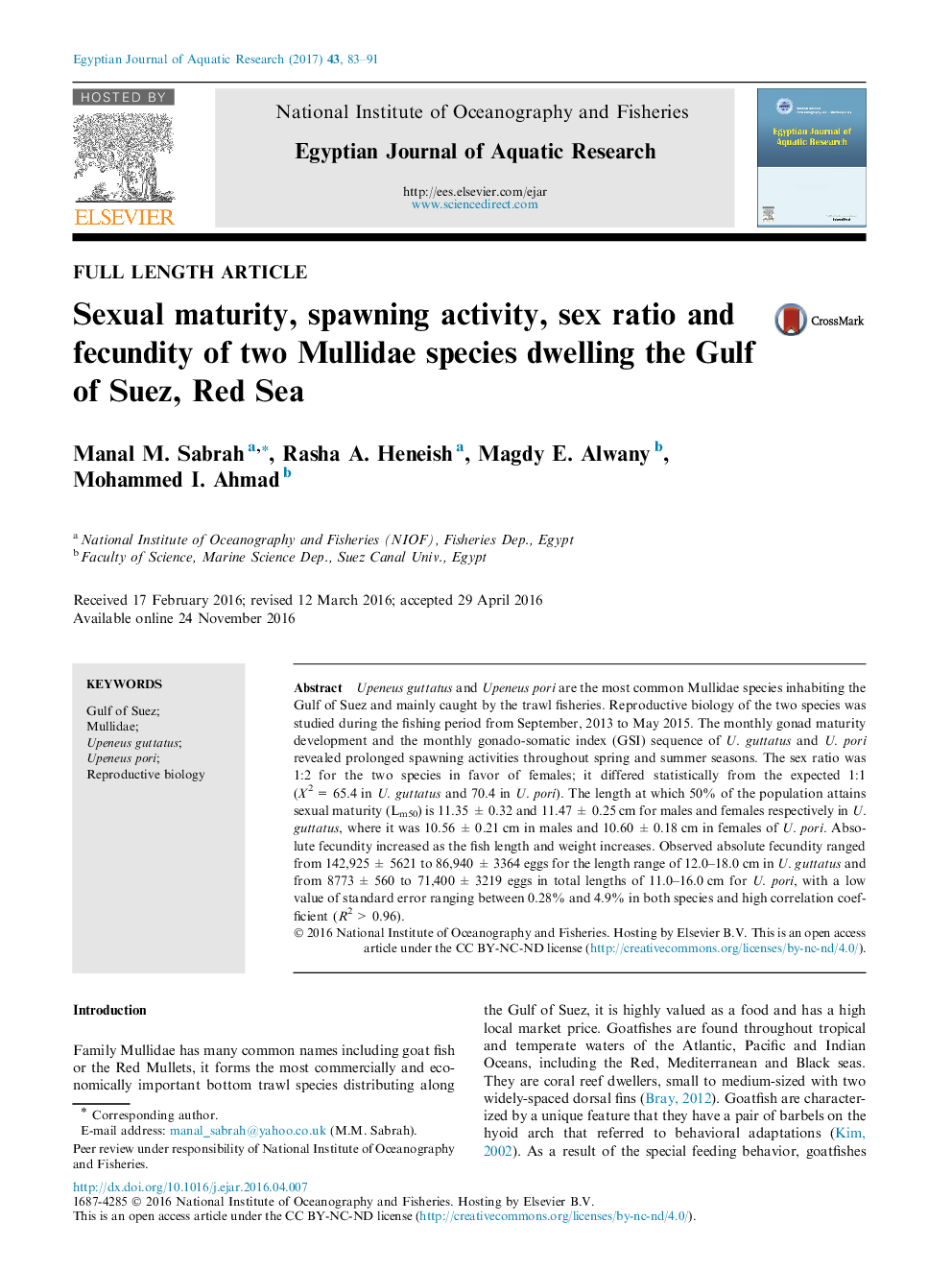| Article ID | Journal | Published Year | Pages | File Type |
|---|---|---|---|---|
| 8875261 | The Egyptian Journal of Aquatic Research | 2017 | 9 Pages |
Abstract
Upeneus guttatus and Upeneus pori are the most common Mullidae species inhabiting the Gulf of Suez and mainly caught by the trawl fisheries. Reproductive biology of the two species was studied during the fishing period from September, 2013 to May 2015. The monthly gonad maturity development and the monthly gonado-somatic index (GSI) sequence of U. guttatus and U. pori revealed prolonged spawning activities throughout spring and summer seasons. The sex ratio was 1:2 for the two species in favor of females; it differed statistically from the expected 1:1 (X2 = 65.4 in U. guttatus and 70.4 in U. pori). The length at which 50% of the population attains sexual maturity (Lm50) is 11.35 ± 0.32 and 11.47 ± 0.25 cm for males and females respectively in U. guttatus, where it was 10.56 ± 0.21 cm in males and 10.60 ± 0.18 cm in females of U. pori. Absolute fecundity increased as the fish length and weight increases. Observed absolute fecundity ranged from 142,925 ± 5621 to 86,940 ± 3364 eggs for the length range of 12.0-18.0 cm in U. guttatus and from 8773 ± 560 to 71,400 ± 3219 eggs in total lengths of 11.0-16.0 cm for U. pori, with a low value of standard error ranging between 0.28% and 4.9% in both species and high correlation coefficient (R2 > 0.96).
Related Topics
Life Sciences
Agricultural and Biological Sciences
Agricultural and Biological Sciences (General)
Authors
Manal M. Sabrah, Rasha A. Heneish, Magdy E. Alwany, Mohammed I. Ahmad,
